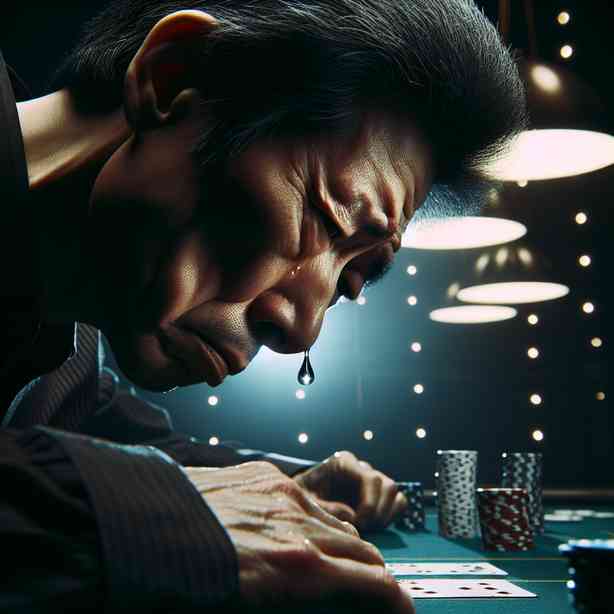
When the Poker Face Breaks
In the realm of human emotions, the ability to maintain a poker face—masking our true feelings and intentions—plays a crucial role in our daily interactions. This concept of emotional concealment stretches across various fields, from psychology to social dynamics and even into the arena of professional life. The phrase “when the poker face breaks” evokes a striking image: a moment when the carefully cultivated facade slips, revealing vulnerability, anxiety, or even joy. Understanding this phenomenon and its implications offers rich insights into our personal and social lives.
The poker face, in essence, is a product of both culture and individual psychology. In many cultures, particularly in competitive environments like business or sports, maintaining an impassive expression is seen as a sign of strength and control. This ability to hide one’s true emotions can be beneficial during high-stress situations, as it can prevent others from exploiting perceived weaknesses. Yet, while a poker face may serve as a shield, it can also become a prison, keeping both ourselves and others from authentic connection.
When the poker face breaks, it often occurs in emotionally charged situations where the stakes are high. It may happen during a significant life event, such as a wedding or a funeral, where the weight of emotional currents becomes too much to bear in silence. It can also transpire in high-pressure work environments, moments of conflict, or even in the presence of compassion from another person. Recognizing the moment when a poker face cracks can be quite revealing—not just about the individual who is experiencing it, but also about the context in which this revelation occurs.
From a psychological standpoint, the breaking of a poker face can signify a range of emotional experiences. It can indicate stress, anxiety, or overwhelm, but it can also represent joy, relief, or an unexpected wave of love. Emotional authenticity is becoming increasingly valued in many circles, encouraging individuals to embrace and express their true feelings. As we navigate through these complexities, the reactions of those around us can further influence the ease with which we let our masks slip away.
It’s imperative to consider the effects of a broken poker face on relationships. When one individual allows their true emotions to surface, it can encourage others to reciprocate. This exchange can forge deeper connections, creating a more profound understanding among peers, friends, or family. For instance, when a colleague shows vulnerability instead of maintaining a stoic demeanor, it can lead to an open dialogue about shared experiences and struggles. This shift can cultivate empathy and foster a supportive environment, where collaboration is valued over competition.
However, breaking one’s poker face isn’t always met with kindness or understanding. In some contexts, it can be viewed as a weakness, leading to negative consequences. Individuals may fear judgement or misunderstanding, which can deter them from expressing themselves. This dichotomy highlights the cultural norms that surround emotional expression. In certain environments, particularly corporate settings, the pressure to maintain professionalism can stifle natural human responses, leading to a rise in stress and burnout.
The consequences of perpetually keeping up a poker face can have detrimental effects on one’s mental health. There is a growing body of research that correlates emotional suppression with anxiety and depression. When individuals consistently hide their emotions, it can lead to increased levels of stress hormones and a sense of disconnection from oneself and others. Conversely, allowing oneself to be vulnerable and breaking the poker face can lead to catharsis and relief, promoting emotional resilience and overall well-being.
Furthermore, the advent of social media adds another layer to the concept of the poker face. Online platforms can create a space where individuals showcase curated versions of their lives, which may be far removed from reality. The pressure to maintain an idealized image can lead to increased feelings of inadequacy and loneliness. When the poker face breaks in these contexts—revealing the raw, unfiltered emotions behind the façade—it can create a powerful moment of authenticity. These instances can resonate deeply with others, reminding us that we are not alone in our struggles and that vulnerability can be an avenue for connection.
As we contemplate the breaking of the poker face, it’s essential to reflect on our own journeys and relationships. How do we balance the need for emotional control with the desire for authenticity? Is it possible to create spaces where vulnerability is welcomed rather than shunned? These questions encourage introspection and can guide us in nurturing more profound connections with those around us.
Building a culture of openness and understanding may start with each individual taking their own initiative. By openly expressing one’s feelings—even in small ways—we can foster an environment that encourages others to do the same. This gradual shift can lead to healthier relationships and workplaces, where emotional intelligence is valued alongside intellectual prowess. Encouraging conversations around mental health and emotional well-being can also dismantle the stigma surrounding vulnerability, paving the way for a more compassionate society.
In the end, when the poker face breaks, we are given an opportunity for growth. It is a chance to realign ourselves with our true feelings, to connect with others on a deeper level, and to foster environments where everyone feels safe to express themselves. Embracing these moments, rather than shying away from them, can enrich our lives in immeasurable ways. As we move forward, let us cherish the beauty of vulnerability and the connections that arise when we allow our authentic selves to be seen.


